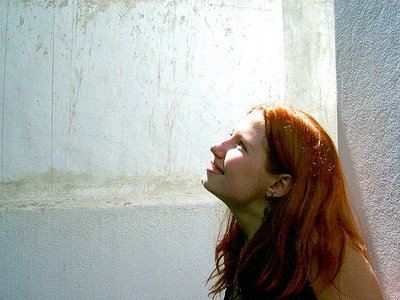 A few months ago, I ran across another image to add to my collection of what living in the Kingdom looks like here-and-now: Scot McKnight’s humans-are-Eikons illustration.
A few months ago, I ran across another image to add to my collection of what living in the Kingdom looks like here-and-now: Scot McKnight’s humans-are-Eikons illustration.If I’m reading McKnight correctly, Eikon is the Greek translation of “Tselem” and “Demut”, two Hebrew terms that are related to “Image,” as in “Image of God.” We humans are Eikons, and our mission is “to eikon”— to “glorify God by relating to God, to self, to others and the world,” to “express, embody, incarnate and bring glory to God.”
But, as a result of the Fall, humans are cracked Eikons who have forfeited their relationship with God (what we are created for). When that happens, “the Eikon unravels and begins to live in its cracks. The cracks seethe with sin. Dwelling there leads to diminishment: mental and moral.”
Yeah, that’s about right—at least in my experience.
There’s only one way, McKnight says, to be un-cracked: a relationship with God—but this has nothing to do with making ourselves better and everything to do with God. As McKnight points out:
We are Eikons who have fallen to the floor and cracked, but God’s gracious love does not permit him to gather us up and toss into the garbage can. Instead, God gathers us up, holds us in his embracing love, and that embrace unleashes the cycle of embracing grace. By embracing us, we are restored; by being embraced, we learn to embrace; by learning to embrace others, we aid in the restoration of others....From what I understand, McKnight unpacks this idea in Embracing Grace (which I haven’t yet acquired and read), but this image is enough for now. It helps me understand a bit more what this following Jesus really looks like. There’s only one way to do it. There’s only one way to live in the Kingdom and that’s by living the way I was designed and meant to—the way Jesus did: in a full-blown relationship with God. What is that? A full-embrace, as-intended, resting-in-God bond, a drawing-back-together. To use Brian McLaren’s images, it’s stepping back into the dance, living “the way God dreams for us.”
When we finally embrace a relationship with God, he makes us anew. That doesn’t mean he mends us back together. He makes us brand new. It’s as if we had never fallen to the floor and broke into a million pieces. We are “un-broken.” And learning to live in that drawn-back-together, as-intended dance-of-a-Kingdom is learning to live unbroken.
But I’m all-too-used to thinking of myself as broken or cracked. As Dan Stone puts it, I have trouble seeing myself as made new. I see myself failing a lot and my gut reaction is to try and fix myself—and often that involves formulas and jumping through hoops, as Donald Miller so well articulates. When I do that, I live as if I am still on the floor broken into a million little pieces. I live as if I’m still broken.
But that’s not the real world. That’s not reality. Reality is, I’m un-broken. I’m new and whole and holy and righteous and loved and living in that Kingdom, breathing that air of grace and love. And (wonder of wonders I am still trying to wrap my mind around) in that Kingdom, I don’t have to live that life: God lives it for me.
And this is a concept I’m only beginning to grasp—the ramifications with which I am constantly grappling. But I know that living in the Kingdom has much to do with remembering who I am and in whom I live and that I live constantly with others. It has oh-so-much to do with learning to live unbroken. And (another wonder I am struggling to wrap my mind around) as I live unbroken, somehow that Kingdom life of restoration and grace spills out of me (at no volition of my own) and into others.
(Image copyright: by Apenas imagens - Marília Almeida at flickr)